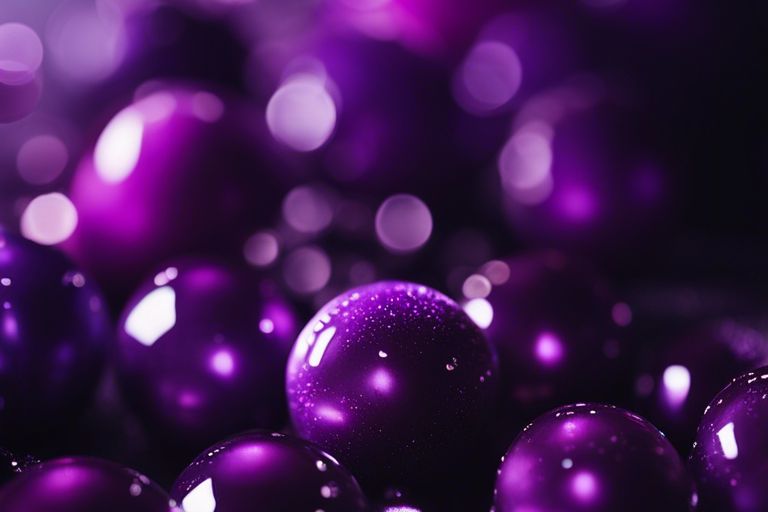What Does The Color White Mean?
It’s time to probe into the symbolic world of colors and explore the meaning behind the pristine hue of white. White, often associated with purity and simplicity, carries a multitude of interpretations that can influence your emotions, perceptions, and even decision-making. In this blog post, you will uncover the deeper significance of the color white and how it impacts your everyday life.

Key Takeaways:
- Purity and Innocence: White is commonly associated with purity, innocence, and cleanliness.
- Peace and Serenity: The color white also symbolizes peace, calmness, and simplicity.
- Clarity and Freshness: White is often used to convey clarity, freshness, and new beginnings.
Cultural Significance
Symbolism in Western Cultures
With its association with purity, innocence, and cleanliness, the color white holds significant symbolism in Western cultures. White is often worn by brides on their wedding day, symbolizing new beginnings and a fresh start. In Christianity, white is associated with light, goodness, and holiness, often worn by priests and used in religious ceremonies to represent the divine.
Meaning in Eastern Cultures
One significant meaning of the color white in Eastern cultures is death and mourning. In some Eastern countries such as China, white is the traditional color of mourning worn at funerals, symbolizing the cycle of life and death. White is also associated with purity and spirituality in Eastern philosophies like Buddhism, where it represents the state of enlightenment and transcendence.
Eastern cultures often use white in traditional ceremonies and rituals to symbolize purity, peace, and new beginnings. White is also commonly seen in traditional attire for special occasions, symbolizing unity and harmony.

Historical Context
Ancient Civilizations
Civilizations throughout history have imbued the color white with various meanings and symbolism. In ancient civilizations such as Egypt and Greece, white was often associated with purity, sacredness, and divinity. White was used in religious ceremonies, representing the forces of light, goodness, and the divine. It was also worn by priests and priestesses as a symbol of their connection to the gods.
Middle Ages to Renaissance
The Middle Ages to Renaissance period saw a shift in the meaning of white. During this time, white was a sign of wealth and social status, often worn by the aristocracy and nobility. It symbolized luxury, elegance, and sophistication. White clothing and palaces adorned with white marble became synonymous with power and grandeur.
The Renaissance period further solidified white as a symbol of purity and virtue, echoing back to its ancient meanings. Artists like Leonardo da Vinci and Michelangelo used white extensively in their works to convey themes of innocence, spirituality, and enlightenment.

Psychological Impact
Emotional Associations
All throughout history, the color white has been linked to various emotional associations. When you think of the color white, what comes to mind? Purity, innocence, and cleanliness are often the first emotions that may surface. White can evoke a sense of peace and tranquility, as it is often associated with simplicity and minimalism. This color has the power to create a sense of freshness and new beginnings, like a blank canvas waiting to be filled with possibilities.
Cognitive Effects
Emotionally, white can be very soothing and calming. It can provide a sense of clarity and promote a feeling of spaciousness. In terms of cognitive effects, white is known to stimulate mental clarity and encourage a clear thought process. When you surround yourself with white, it can help your mind feel more organized and focused. This color can also create a sense of openness and expansiveness, allowing your thoughts to flow freely without constraints.
For instance, imagine sitting in a white room with minimal distractions. Your mind is likely to feel more at ease, enabling you to concentrate better on the task at hand. The simplicity of white can help declutter your mind and promote a sense of mental peace and clarity.
Artistic Expression
Many artists use the color white to convey various meanings and emotions in their work. It is a versatile shade that can symbolize purity, innocence, simplicity, and even emptiness, depending on the context in which it is used. White can make a bold statement on its own or serve as a canvas for other colors to pop against. In the world of art, the color white holds a significant place in artistic expression.
In Painting and Sculpture
One of the most well-known uses of white in art is in the minimalist movement, where artists use white space to evoke a sense of tranquility and simplicity. White can also be used to create contrast and add depth to a piece, as seen in sculptures where the interplay of light and shadow on white surfaces creates a striking visual impact. Whether used as the main focus or as a supporting element, white plays a crucial role in the world of painting and sculpture.
In Fashion and Design
For fashion designers, the color white is a timeless choice that exudes elegance, purity, and sophistication. White garments are often associated with new beginnings, making them popular choices for weddings and other special occasions. In interior design, white walls and furniture can create a sense of openness and lightness in a space, making it appear larger and more inviting. The color white in fashion and design is a versatile tool that can be used to convey a wide range of emotions and aesthetics.
Plus, white is a color that transcends cultural boundaries, making it a universally understood symbol of purity and simplicity. Whether you are drawn to the clean lines of a white sculpture or the timeless elegance of a white dress, the color white speaks to the inner desire for a fresh start and a blank canvas on which to create something new and beautiful.
Spiritual Connotations
Now, let’s research into the spiritual connotations of the color white. In various religious and spiritual traditions, white is often associated with purity, divinity, and righteousness.
Religious Symbolism
On a religious level, white is frequently linked to light, goodness, and the divine. In Christianity, followers often wear white garments during important ceremonies like baptisms and weddings, symbolizing purity and new beginnings. Similarly, in Hinduism, white is considered the color of purity, peace, and spirituality, often worn during religious ceremonies and festivals.
Mystical and Esoteric Meanings
Connotations of white in mystical and esoteric realms often highlight concepts of illumination, clarity, and spiritual awakening. White is believed to have cleansing properties, both physically and spiritually, helping individuals clear their minds and connect with higher realms of consciousness. This color is also associated with the crown chakra, the center of spiritual connection and enlightenment in the body.
Another key aspect of the mystical and esoteric meanings of white is its representation of the union of all colors. White light contains all colors of the spectrum, symbolizing completeness and oneness. This idea is often echoed in spiritual practices that aim to integrate all aspects of the self to achieve harmony and transcendence.
Contemporary Relevance
Branding and Marketing
The color white holds a significant place in branding and marketing strategies. It symbolizes purity, cleanliness, and simplicity, making it a popular choice for companies wanting to convey a sense of sophistication and modernity. When you see products packaged in white, it often gives off an impression of luxury and high quality. This color is commonly used by tech companies to represent innovation and minimalism in their products. When you incorporate white into your branding, it can help to create a sense of trust and efficiency with your audience.
Social and Political Movements
Social and political movements also utilize the color white to make a powerful statement. White is often associated with peace, unity, and equality, making it a common choice for protests and demonstrations. It symbolizes a blank canvas, ready for change and progress. In recent years, the color white has been prominently featured in movements advocating for gender equality, such as the Women’s Rights Movement. By wearing white, individuals can show solidarity and support for the cause they believe in.
Social and political movements have historically used colors to represent their beliefs and unite their followers. The color white’s neutrality and ability to blend with other hues have made it a versatile symbol for various causes. When you participate in a movement that incorporates white, you become part of a larger narrative that aims to bring about positive change in society.
To wrap up
Following this exploration of what the color white means, you now have a deeper understanding of its symbolism and significance across various cultures and contexts. White often represents purity, innocence, and cleanliness, but it can also symbolize new beginnings, simplicity, and openness.
Whether you incorporate more white into your wardrobe or home decor to evoke a sense of tranquility and balance, or you pay closer attention to how white is used in different settings to convey different messages, remember that color carries meaning beyond just what meets the eye. Embrace the power of white to bring a sense of calm and clarity into your life, and appreciate the beauty and depth of this versatile color.
FAQ
Q: What does the color white symbolize?
A: White is often associated with purity, innocence, and cleanliness. It can also represent simplicity, perfection, and new beginnings.
Q: How does the color white affect emotions?
A: White is known to create a sense of peace, calmness, and serenity. It can evoke feelings of clarity, openness, and freshness. However, in some cases, white can also be perceived as cold or sterile.
Q: In what contexts is the color white commonly used?
A: White is often used in weddings to symbolize purity and new beginnings. It is also commonly used in medical settings to convey cleanliness and sterility. Additionally, white is frequently used in design to create a sense of simplicity and elegance.






